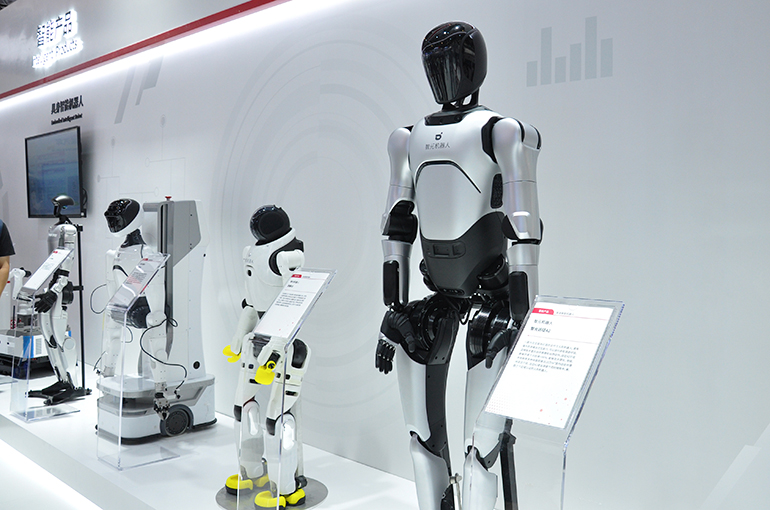 Humanoid Robots' Production Costs to Drop 70% Over Next Decade, Report Says
Humanoid Robots' Production Costs to Drop 70% Over Next Decade, Report Says(Yicai) Nov. 27 -- The production cost of humanoid robots will likely fall 60 to 70 percent over the next 10 years due to the supply chain maturing and a scale effect emerging, with China's strong supply chain foundation conducive to forming industrial advantages, according to a new report.
New energy vehicles' bill of materials costs have dropped 50 to 60 percent over the past decade, with a similar trend in the humanoid robot sector, where such costs are expected to fall to between USD10,000 and USD20,000 from USD40,000 and USD50,000 by 2035, US management consulting firm Bain & Company said in a report released yesterday.
For example, the price of planetary roller screws and six-dimensional force sensors, which make up about 40 percent of the humanoid robots' production costs, will decline 70 to 80 percent as more and more companies start manufacturing them, Bain said.
In terms of androids' core components, China will likely have large-scale manufacturing capabilities based on its huge supply chain and rapidly developing technology and manufacturing processes, creating future industrial advantages, Zhao Tianchen, managing director of Bain, told Yicai.
Planetary roller screws and six-dimensional force sensors will achieve cost optimization through mass production within three to five years, while other key components, including artificial intelligence chips, batteries, and thermal management systems, may take five to 10 years to see significant technological breakthroughs, according to Bain.
China has a good foundation for developing AI chips, with low-end chips expected to achieve technological independence and controllability over the next five years, while high-end chips will likely make significant progress within ten years, Bain pointed out.
Although the global humanoid robot sector is still in the early phase of exploration, due to production costs continuing to fall, androids will exceed human labor in some industries by return on investment, marking a tipping point for large-scale replacement of human workers, Bain noted.
The humanoid robot industry will enter a golden period of development in the next five to 10 years, with global sales expected to reach 6 million units and the market to top USD120 billion by 2035, Bain said. In a more optimistic scenario, sales may even exceed 10 million units, while the market can reach USD260 billion.
In the early exploration phase, the primary market for humanoid robots is scientific research and industrial pilots, while cars, electronics, and mechanical equipment producers will be the first to replace human labor, Bain noted, adding that androids will eventually enter the medical, logistics, commerce, and home areas.
Editors: Dou Shicong, Martin Kadiev